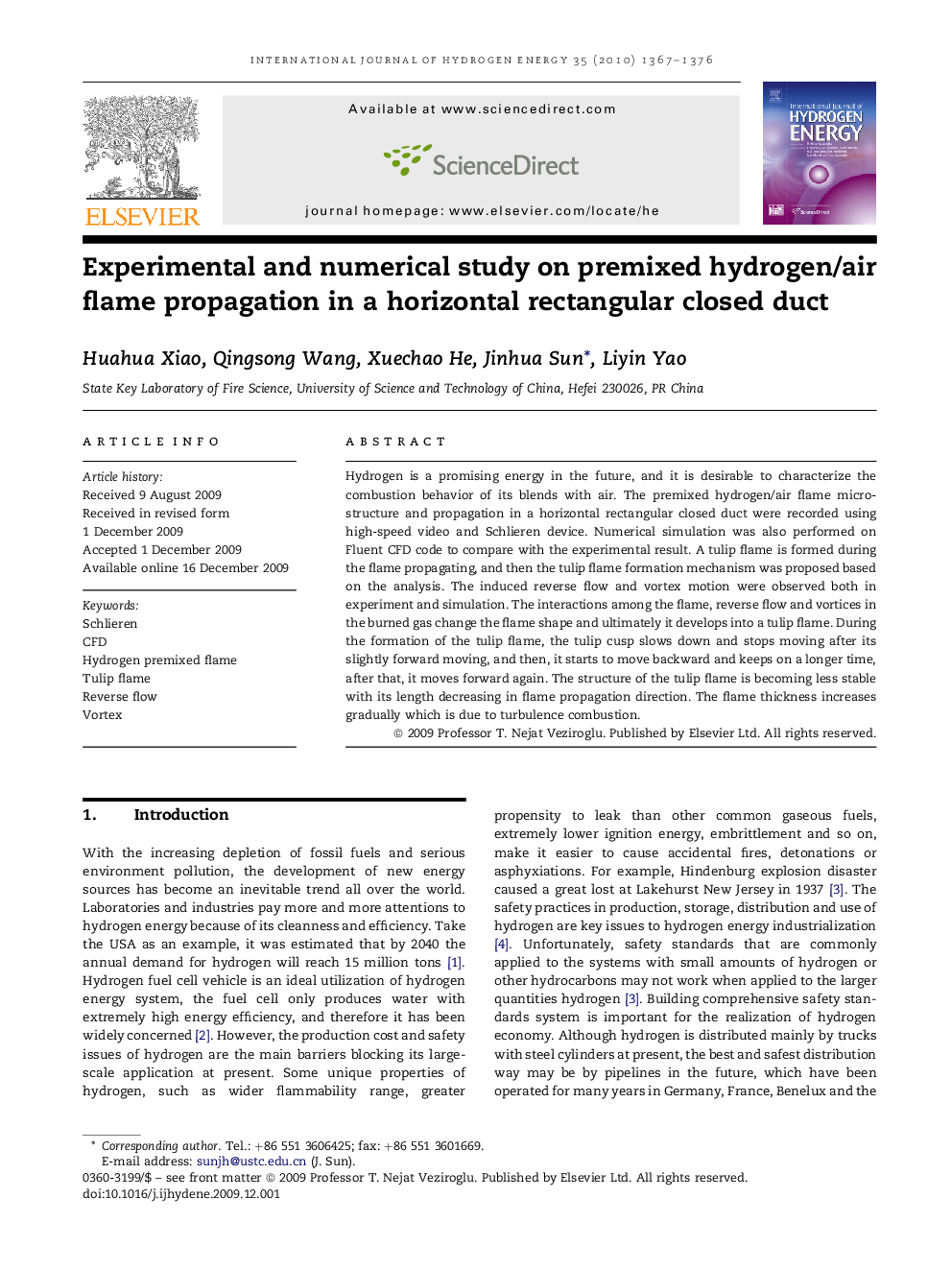| Article ID | Journal | Published Year | Pages | File Type |
|---|---|---|---|---|
| 1273532 | International Journal of Hydrogen Energy | 2010 | 10 Pages |
Hydrogen is a promising energy in the future, and it is desirable to characterize the combustion behavior of its blends with air. The premixed hydrogen/air flame microstructure and propagation in a horizontal rectangular closed duct were recorded using high-speed video and Schlieren device. Numerical simulation was also performed on Fluent CFD code to compare with the experimental result. A tulip flame is formed during the flame propagating, and then the tulip flame formation mechanism was proposed based on the analysis. The induced reverse flow and vortex motion were observed both in experiment and simulation. The interactions among the flame, reverse flow and vortices in the burned gas change the flame shape and ultimately it develops into a tulip flame. During the formation of the tulip flame, the tulip cusp slows down and stops moving after its slightly forward moving, and then, it starts to move backward and keeps on a longer time, after that, it moves forward again. The structure of the tulip flame is becoming less stable with its length decreasing in flame propagation direction. The flame thickness increases gradually which is due to turbulence combustion.
